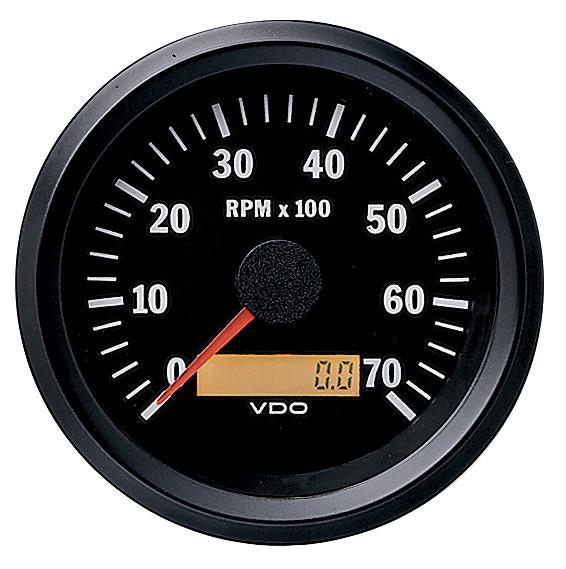Professional Tips for Preserving and Calibrating Your Tachometer
Professional Tips for Preserving and Calibrating Your Tachometer
Blog Article
Unlocking the Tricks of Tachometers: Everything You Need to Learn About This Vital Tool in Your Lorry
Comprehending the ins and outs of tachometers can supply important insights right into your lorry's efficiency and maintenance requirements. From gauging engine rate to understanding the data it presents, tachometers work as an essential device for automobile owners and enthusiasts alike. By untangling the secrets behind this important instrument, you can unlock a wealth of details that can improve your driving experience and ensure the longevity of your lorry.
Value of Tachometers
The importance of tachometers hinges on their capability to provide crucial real-time information about an engine's rotational rate, permitting specific tracking and upkeep of machinery. By gauging the transformations per min (RPM) of an engine's crankshaft, tachometers provide valuable understandings right into the engine's performance - tachometer. This information is vital for ensuring that the engine runs within its optimum variety, preventing potential damages from over-revving or underperforming
Tachometers play a vital function in aiding operators and professionals spot any kind of anomalies in the engine's speed, which can indicate problems such as fuel inadequacy, mechanical problems, or extreme pressure on the engine. By quickly determining these concerns through tachometer readings, upkeep can be performed proactively, avoiding pricey repairs and downtime in the future.
Moreover, tachometers are especially vital in high-performance vehicles and machinery, where accurate control over engine rate is essential for optimum operation. Racing automobiles, airplane, and commercial tools rely upon tachometers to deliver peak efficiency while keeping safety and security standards. Fundamentally, tachometers are not simply tools for measuring speed however vital devices for ensuring the smooth and efficient operation of engines across various applications.
How Tachometers Measure Engine Speed
Making use of sensing units that discover the frequency of electric pulses generated by the engine's ignition system, tachometers properly determine the rotational speed of an engine. By monitoring the price at which these pulses are gotten, tachometers provide real-time responses on exactly how fast the engine's crankshaft is revolving per minute, commonly described as revolutions per minute (RPM)
The tachometer's sensor, frequently connected to the engine's ignition coil or ignition system cords, grabs the electric signals created each time a cyndrical tube fires. These signals are then exchanged RPM analyses showed on the scale or instrument collection within the chauffeur's sight. Tachometers can be analog or digital, with modern-day cars typically featuring electronic displays for accurate and rapid RPM readings.
This details is important for drivers to comprehend the engine's efficiency, prevent over-revving, enhance equipment shifting, and make sure efficient fuel intake. By accurately determining engine rate, tachometers play an important function in aiding drivers operate their lorries safely and effectively.
Translating Tachometer Analyses
Having a clear understanding of how tachometers determine engine rate sets the structure for effectively translating the RPM analyses presented. Analyzing tachometer readings is important for ideal lorry efficiency and engine health. RPM (Revolutions Per Minute) readings on the tachometer indicate the speed at which the engine's crankshaft is revolving. When the engine is idling, the tachometer needle commonly rests around 600-1000 RPM, depending upon the automobile. As you increase, the RPM will boost, mirroring the engine's higher rotational speed. When moving gears in a hands-on transmission lorry, the RPM will certainly go down as you involve the clutch and adjustment equipments, after that climb once more as you increase in the brand-new equipment. Monitoring the tachometer can assist you identify the most efficient shifting points to optimize gas economic climate and engine power. Furthermore, irregular changes or constantly high RPM readings could suggest prospective problems with the engine check my blog that may require specialist focus. By paying interest to the tachometer readings and understanding how to analyze them, you can guarantee your car operates efficiently and successfully.


Tips for Utilizing Tachometers Efficiently
To boost driving effectiveness and maximize engine performance, what trick methods can be implemented for successfully utilizing tachometers? Tachometers are critical tools that give real-time his response comments on engine rate, enabling vehicle drivers to make educated choices for better performance - tachometer. Right here are some tips for utilizing tachometers effectively:
Comprehending Optimum RPM Range: Familiarize on your own with the optimal RPM (Transformations Per Min) range for your automobile. This array ranges various cars and is normally shown in the owner's handbook. Maintaining the engine within this range can enhance gas performance and prolong the engine's life expectancy.
Moving Equipments at the Correct Time: Make use of the tachometer to determine the most effective time to move gears. Upshifting prematurely or as well late can cause lowered efficiency and performance. Goal to change equipments when the RPM gets to the optimal variety for the next equipment.
Checking Engine Stress: High RPMs for prolonged durations can stress the engine. Watch on the tachometer to stop over-revving, especially throughout velocity or when lugging hefty tons.
Tachometers and Lorry Upkeep
When taking into consideration lorry upkeep, tachometers play a vital function in keeping track of engine performance and spotting potential issues. Tachometers offer important information on engine rate, enabling drivers and technicians to make certain that the engine is operating within the recommended RPM array. Consistently keeping an eye on the tachometer readings can aid determine problems such as engine misfires, damaged ignition system, or concerns with the fuel distribution system. By taking note of the tachometer, chauffeurs can prevent too much strain on the engine, which can bring about expensive repairs down the line.
Along with spotting possible issues, tachometers can likewise aid in enhancing gas efficiency. By keeping the engine rate within the optimal variety, vehicle drivers can improve their gas mileage and decrease fuel intake. This not just benefits the motorist's pocketbook but likewise adds to ecological conservation by reducing dangerous emissions.
Final Thought

Report this page